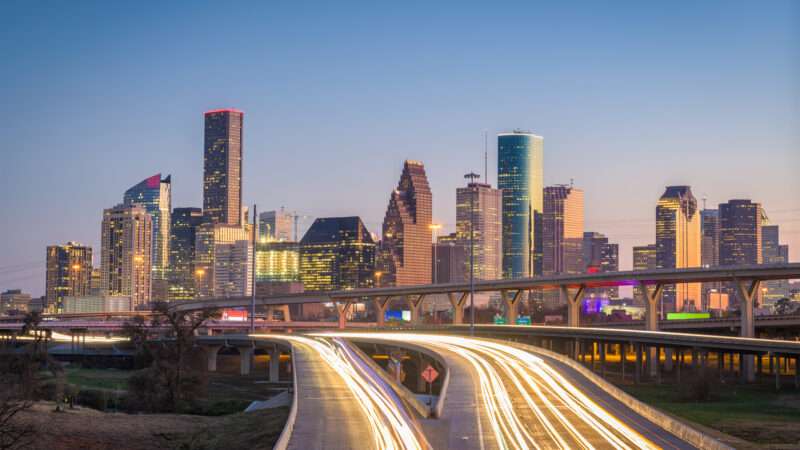
The infrastructure bill moving through Congress is a debt-funded, red-tape-layering mess. Tucked inside it, however, is a program that could help shift the costs of infrastructure to the people who use it.
For most of its history, the federal government was able to pay for all its highway spending through federal excise taxes on gasoline—that is, taxes paid by people using the highways. But over the past decade, highway spending has outpaced gas tax revenues, thanks to increasingly fuel-efficient vehicles, slower post-recession growth in auto travel, and the diversion of gas tax revenue to transit. To plug that gap, Congress has directed $158 billion of general, non-gas-tax-generated funds to the Highway Trust Fund.
One idea floated to end these persistent shortfalls is to replace a gas tax with a fee based on the number of miles a vehicle travels.
To that end, the 2,700-page infrastructure bill would spend $50 million over five years to create and promote a National Motor Vehicle Per-Mile User Fee Pilot program.
This pilot program would solicit the participation of volunteers across the country who’d opt in to paying a mileage fee set by the secretary of transportation each year. That fee could take into account the weight and type of vehicles to better “reflect estimated impacts on infrastructure, safety, congestion, the environment, or other related social impacts.”
The fees paid by these volunteers would all go to the Highway Trust Fund. Pilot participants would also get to choose different methods of providing their mileage data to the government. The bill lists a number of possible ways to collect information, including a smartphone app, an onboard device provided by a third party, and data collected by insurance or car companies.
A number of mileage fee programs are already underway at the state and regional levels.
The most developed is Oregon’s OreGo. People who opt in to this program pay 1.8 cents per mile traveled in exchange for a credit on the gas taxes they pay at the pump. This program started in 2015 with 5,000 drivers, and it has since expanded to all willing participants with a qualifying vehicle.
Utah has a more limited program that allows owners of hybrid, electric, and other alternative fuel vehicles to pay a 1.5 cent fee in lieu of the special registration fees they’d otherwise be charged.
California and Washington have also run time-limited pilot programs. Since 2016, the federal government has given out $95 million in grants to 37 state-level programs testing various aspects of mileage-based user fees. The current infrastructure bill would give another $75 million over five years to states, localities, and regional entities to set up their own pilot programs.
“A national pilot lets us do it at a scale that the states can’t do,” says Adrian Moore, vice president of policy at the Reason Foundation (which publishes this website). “We’ve had pilots with 5,000 people in them. What we need is one with 50,000 people in them.”
The biggest problem with the national mileage fee pilot in the infrastructure bill as written, he says is that it doesn’t exempt volunteer participants from federal gas taxes.
“It explicitly violates the stated intent, which is to replace the gas tax with a mileage-based charge,” he says. “Who’s going to volunteer to pay double?”
Moore predicts that an exemption to federal gas taxes for program participants will get included tacked onto the national pilot, either by an amendment in Congress or by the federal bureaucrats who set up the program down the line.
A mileage fee is not without controversy. Americans for Tax Reform has criticized the proposed pilot as laying the groundwork for another tax hike. The trucking industry is a reliable opponent of a mileage fee as well.
Moore says that free marketeers should stop worrying and learn to love mileage fees. Thus far, he notes, none of the pilot programs at the state level have attempted to charge drivers a fee on top of a gas tax. Having a funding mechanism that charges drivers for the infrastructure they use is a also good way to avoid massive, deficit-funded bills like the one Congress is considering, he adds.
“This is still an experimental idea. In theory, it’s a better way to charge for roads. It’s a direct user fee. It’s more like what the market would do than the gas tax. In that way, it’s definitely a step in the right direction,” says Moore.
from Latest – Reason.com https://ift.tt/3lKXuPN
via IFTTT